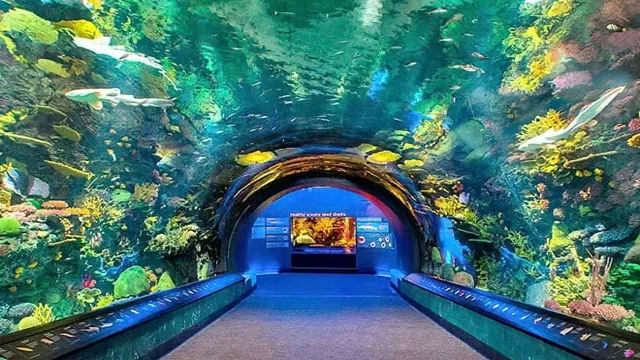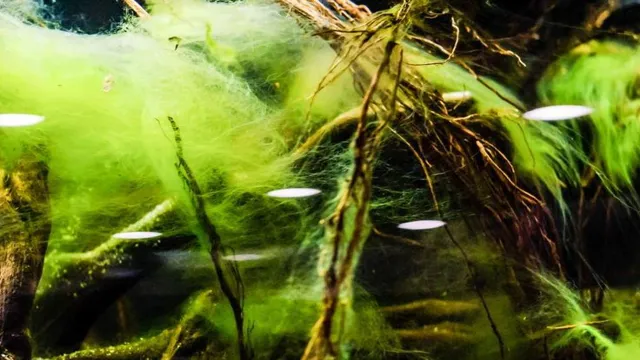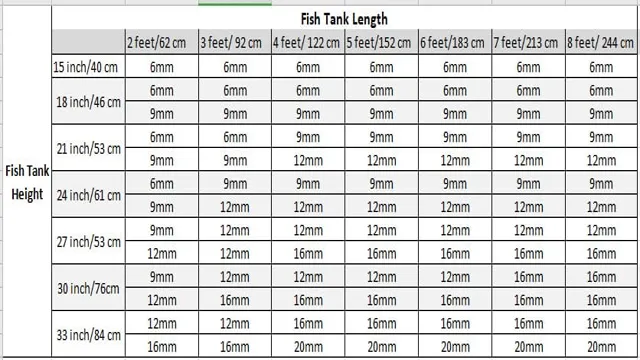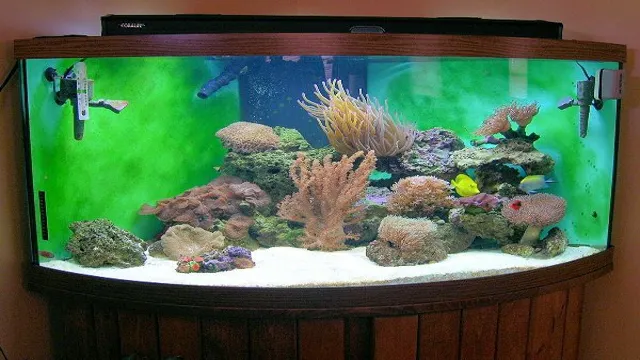How to Cycle Aquarium Tank – Step by Step Guide for Beginners

Have you just purchased or inherited an aquarium tank and are wondering how to cycle it correctly? Don’t worry; you’re not alone. Many beginners have the same question, and it’s an important one to ask. Cycling an aquarium refers to the process of establishing beneficial bacteria that will break down harmful toxins in the tank, creating a safe and stable environment for your fish and other aquatic creatures.
Think of it as a housewarming party for your tank’s new inhabitants, but instead of balloons and decorations, you’re setting up a bacterial buffet. So why is cycling important? Well, without establishing a healthy bacteria colony, toxic ammonia levels can build up quickly and harm or even kill your fish. Cycling can take anywhere from a few weeks to several months, depending on the tank size and type of filter used.
But don’t let that discourage you; with patience and the right steps, you can ensure a healthy environment for your aquatic pets. In this beginner’s guide, we will cover the basics of cycling an aquarium tank, including the nitrogen cycle, how to test water parameters, and what to do if something goes wrong. Whether you’re a first-time tank owner or just looking to refresh your cycling knowledge, this guide will provide you with the necessary information to create a happy and healthy home for your aquatic friends.
So let’s dive into the art of aquarium tank cycling and get started, shall we?
What is Aquarium Cycling?
Cycling an aquarium tank is an important step that every hobbyist should take before adding fish and other aquatic creatures to the tank. It refers to the process of establishing beneficial bacteria colonies in the tank that will help break down fish waste and other organic debris. This process ensures that ammonia and nitrites, which can be toxic to fish, are converted into less harmful nitrates.
The key to successful aquarium cycling is to introduce a source of ammonia into the tank, such as fish food or pure ammonia, and then let the bacteria colonies establish over time. This can take anywhere from a few weeks to a few months, depending on the size of the tank and the number of fish intended to be added. Regular monitoring of water parameters, such as ammonia, nitrite, and nitrate levels, is essential during the cycling process to ensure that the tank is safe for fish to inhabit.
By taking the time to properly cycle an aquarium tank, hobbyists can create a healthy and thriving environment for their aquatic pets.
Understanding the Nitrogen Cycle
Aquarium cycling is the process of establishing a healthy nitrogen cycle in a new aquarium. The nitrogen cycle is a biological process in which beneficial bacteria break down toxic ammonia and nitrite into less harmful nitrate. However, it takes time for these bacteria to establish themselves in a new tank, and during this period, toxic levels of ammonia and nitrite can build up and harm fish and other aquatic life.
Aquarium cycling involves adding a source of ammonia, such as fish food or pure ammonia, to the tank and allowing the bacteria to gradually multiply and establish themselves. This process can take several weeks, and frequent water testing is necessary to ensure that ammonia and nitrite levels remain at safe levels for fish. Ultimately, proper aquarium cycling is crucial for the long-term health and stability of an aquarium ecosystem.

How to Cycle Your Aquarium Tank
If you’re new to the world of fish keeping, one of the most important things you need to do is cycle your aquarium tank. Cycling is a process of establishing healthy bacteria in the tank and creating a balanced ecosystem for your fish to thrive. To begin the process, add ammonia to your tank, which serves as food for the bacteria.
Wait for several weeks, testing the water regularly for the presence of ammonia, nitrite, and nitrate. As ammonia levels begin to drop, nitrite levels will begin to rise, and eventually nitrate levels will increase as well. This indicates that your tank is cycling properly.
Once nitrate levels have stabilized and ammonia and nitrite levels are undetectable, the tank is fully cycled and ready for fish to be introduced. Cycling your aquarium tank may require some patience, but it is a crucial step in creating a healthy and thriving environment for your aquatic pets.
Preparing Your Tank for Cycling
Cycling your aquarium tank is an essential process that prepares your fish for a healthy and thriving environment. Before adding any fish to your tank, you must first establish beneficial bacteria that will convert toxic ammonia and nitrite into less harmful nitrate. To begin the cycling process, start by setting up your aquarium tank with proper filtration and substrate to encourage the growth of beneficial bacteria.
Add a small amount of food to encourage the growth of bacteria. Test your water regularly for ammonia, nitrite, and nitrate levels to monitor the progress of the cycling process. It can take anywhere from four to six weeks for your aquarium tank to fully cycle.
Once complete, the water in your tank will be safe for your fish and ready for new additions. Keep in mind that patience is key to ensuring the success of your aquarium tank’s cycling process. By taking the time to properly cycle your tank, you’ll be providing your fish with a healthy and safe environment to thrive in.
Choosing the Right Cycling Method
When it comes to cycling your aquarium tank, there are a few methods to choose from. One popular method is the fish method, where you add a small number of hardy fish to your tank to kickstart the nitrogen cycle. Another method is the fishless method, where you add pure ammonia to the tank instead.
While the fishless method may be a bit more time-consuming, it ensures that no harm comes to your aquatic pets. Regardless of the method you choose, it’s important to closely monitor your water parameters during the cycling process. This includes measuring levels of ammonia, nitrite, and nitrate.
By staying on top of your tank’s cycling process, you’re setting your aquarium up for success in the long run. So, whether you choose the traditional fish method or the more modern fishless method, make sure to keep a close eye on your water parameters and give your tank the time it needs to fully cycle.
Seeding Your Tank with Good Bacteria
Cycling your aquarium tank is essential to ensure the health and well-being of your fish. One key step in this process is seeding your tank with good bacteria. These beneficial bacteria help break down fish waste and other organic matter, converting them into less harmful compounds.
There are several ways to introduce these bacteria into your tank, including using a commercial bacterial supplement or adding substrate from an established tank. It’s important to give the bacteria time to establish themselves and build up in your tank before adding any fish. This process can take several weeks, but it’s worth the wait to ensure a healthy and stable environment for your aquatic pets.
By properly cycling your tank and seeding it with beneficial bacteria, you can provide your fish with a clean and healthy environment to thrive in. So, be patient and diligent in your efforts, and your fish will thank you for it!
Adding an Ammonia Source
Cycling your aquarium tank is an essential step you must take before adding fish to it. One critical aspect of cycling is the presence of ammonia in your tank water. This is because ammonia is the primary source of food for the nitrifying bacteria in your tank’s biological filter.
Without this essential element, your tank’s ecosystem cannot establish itself, and your fish could die from high levels of ammonia toxicity. So, how do you add an ammonia source to your aquarium? There are several ways of doing this, but the easiest and safest method is by using pure ammonia. You must also have a test kit to measure the ammonia levels, as it should be kept between 2-4 ppm for the cycling to be efficient.
Adding too little will slow down the cycling process, and adding too much could harm your fish. By following these steps, your aquarium water will become biologically stable, and you will be ready to add your fish soon.
Monitor Your Water Parameters
Cycling an aquarium tank is essential to ensure a healthy environment for your aquatic pets. One crucial step in the process is monitoring your water parameters. This means regularly testing the pH, ammonia, nitrite, and nitrate levels in your tank and keeping them within the appropriate range for your fish and plants.
A test kit is an affordable and effective tool that every aquarium owner should have in their kit. It’s important to remember that cycling takes time, and you should not rush it. Patience is key, and you may encounter some bumps along the way.
But don’t worry, it’s normal! Just continue to monitor your water parameters and perform regular partial water changes to keep the environment stable for your aquatic pets. In the end, a properly cycled aquarium will provide a healthy and thriving habitat for your fish to enjoy.
When is Your Tank Fully Cycled?
If you’re wondering when your aquarium tank is fully cycled, you’ll need to first understand the process of cycling itself. Cycling refers to the natural process of establishing beneficial bacteria in your tank to break down the toxic waste produced by your fish. This process can take several weeks and requires patience and diligence.
You’ll know your tank is fully cycled when you see nitrite levels drop to zero and nitrates begin to appear. Testing your water regularly with a reliable kit is essential to ensure that your water parameters are stable and safe for your fish. Once your tank is fully cycled, you can slowly introduce fish into the tank while monitoring the water parameters and making necessary adjustments.
Remember to continue testing your water regularly even after the cycle has completed to maintain a healthy environment for your aquatic pets.
Signs of a Cycled Tank
If you’re new to the world of fishkeeping, you might be curious as to when your tank is fully cycled. Fortunately, there are some telltale signs that you can look out for. One of the most significant indicators is a decrease in ammonia levels.
Ammonia is a toxic substance that can harm your fish, but during the cycling process, beneficial bacteria convert it into nitrite and then nitrate. When your tank is fully cycled, you should see a noticeable decline in ammonia levels. Additionally, nitrite and nitrate levels should be present.
Another sign to look out for is an increase in oxygen levels. As the bacteria in your tank grow, they consume oxygen, but once the cycle is complete, the level of oxygen will increase. Finally, you should see a reduction in pH fluctuation.
When your tank is cycling, pH levels can fluctuate rapidly, but as it stabilizes, the fluctuations should become less frequent and less severe. By keeping an eye out for these signs, you can ensure that your tank is fully cycled and ready for your fish to enjoy.
Testing Your Water Parameters
When starting a new aquarium, it’s important to always test your water parameters to ensure a healthy environment for your aquatic pets. One crucial measurement to take is the level of ammonia within the water, which should be under 0.25 ppm.
Once your aquarium has reached the appropriate levels of ammonia, nitrite, and nitrate, you can conclude that your tank is fully cycled. This occurs when the beneficial bacteria in your filtration system have successfully established themselves and can convert harmful ammonia into nitrates. However, this process can take up to 6-8 weeks, so patience is key.
During this time, it’s important to monitor the water closely, perform partial water changes to reduce nitrate levels and continue to test regularly. Remember, a fully cycled aquarium will provide a safe and stable environment for your aquatic pets.
Maintaining a Cycled Aquarium Tank
Maintaining a cycled aquarium tank is crucial for the health of aquatic life. The process of cycling a new tank involves establishing beneficial bacteria that break down harmful compounds. Once established, it’s important to regularly test the water parameters to ensure they stay within safe levels.
This can be done using test kits available at pet stores. Regular water changes and cleaning are also necessary to prevent the buildup of harmful substances like ammonia and nitrites. Paying attention to the feeding schedule is also important as overfeeding can lead to excess waste, which can quickly throw off the balance of the tank.
By properly maintaining a cycled aquarium tank, not only will the aquatic life thrive, but it will also provide a visually pleasing addition to any room.
Regular Partial Water Changes
Regular partial water changes are one of the most important activities in maintaining a healthy and stable environment for your aquarium fish. This regular routine helps eliminate toxic waste products that accumulate in the water, which can become hazardous for your fish. Changing 10-15% of water every week will maintain the water conditions that your aquarium’s inhabitants need to thrive.
Always use a water conditioner to eliminate the chlorine and other chemicals found in tap water that can harm your fish. Also, make sure that you do not change all of the water at once. This sudden change in water volume can cause stress on your fish, making them more susceptible to diseases and infections.
Therefore, regular partial water changes can help maintain a healthy, cycled aquarium tank for your aquatic pets.
Avoid Overfeeding
Maintaining a cycled aquarium tank is vital to ensure the well-being of your aquatic pets. One aspect to keep in mind is to avoid overfeeding them. Overfeeding can cause several problems including poor water quality, oxygen depletion, and fish health issues.
As fish produce waste, uneaten food adds to the waste burden, making it harder for your aquarium’s natural filtration system to keep up. This may lead to a toxic environment harmful to your fish. In addition, undigested food can cause blockages and infections, leading to health problems such as constipation and swim bladder disease.
To prevent overfeeding, you can feed your fish small amounts of food twice a day and remove any uneaten food within five minutes. Proper feeding habits, in addition to regular water changes and tank maintenance, can help keep your aquarium clean, healthy, and thriving.
Monitor Fish Behavior and Health
Maintaining a cycled aquarium tank is crucial for ensuring the health and behavior of your fish. Cycling refers to the process of building up beneficial bacteria in the tank that break down fish waste and other organic matter. Without cycling, the toxins from fish waste can build up and harm the fish.
To cycle your tank, you will need to add a source of ammonia to the water, whether it be from fish food or pure ammonia. Over time, the bacteria will develop and start to break down the ammonia into less harmful compounds. It can take several weeks for the cycle to complete, so patience is key.
Once your tank is fully cycled, you will need to monitor the water parameters regularly to ensure they stay within the appropriate range for your fish. This includes testing the pH, ammonia, nitrite, and nitrate levels. Any sudden spikes or changes could be a sign of a problem and should be dealt with promptly.
Keeping a close eye on your fish’s behavior is also important. Any changes in activity or appetite could indicate a problem with the tank’s environment. Similarly, any visible signs of disease or infection should be addressed right away to prevent the spread to other fish.
Ultimately, maintaining a cycled aquarium tank takes time and effort, but it is essential for the health and happiness of your fish. With proper care and attention, your aquarium can be a beautiful and thriving ecosystem for years to come.
Conclusion
In conclusion, cycling an aquarium tank is like riding a bike – at first, it seems daunting and you may stumble a bit, but with a bit of practice and determination, you’ll be cruising along smoothly. Just like how balancing on the bike pedals takes time, it’s important to give your tank time to establish a healthy bacterial colony through the nitrogen cycle. And just like how maintaining proper form and technique while cycling is crucial for preventing injury and maximizing performance, regularly monitoring water quality and performing routine maintenance on your tank is key to keeping your aquatic friends happy and healthy.
So, grab your helmet (and test kit) and get ready to pedal (cycle) towards a thriving aquarium tank!”
FAQs
What is cycling an aquarium tank and why is it important?
Cycling an aquarium tank is the process of establishing beneficial bacteria in the tank that will break down harmful toxins and create a balanced ecosystem for the fish and other aquatic creatures. It is important because it creates a healthy environment for the fish to thrive in.
How do I cycle an aquarium tank?
There are two main ways to cycle an aquarium tank: fish-in cycling and fishless cycling. Fish-in cycling involves adding a small number of hardy fish to the tank to produce waste, which will start the process of establishing bacteria. Fishless cycling involves adding a source of ammonia to the tank, such as fish food or pure ammonia drops, to create the same process without any fish.
How long does it take to cycle an aquarium tank?
The cycling process can take anywhere from 4-8 weeks, depending on the size of the tank, the type of fish, and the method of cycling. It is important to monitor the water quality throughout the process to ensure that the levels of toxins are not harmful to the fish.
Can I add more fish to the tank during the cycling process?
It is not recommended to add more fish to the tank during the cycling process, as the levels of toxins can be harmful to the fish. It is best to wait until the process is complete and the water quality has stabilized before adding more fish.
What should I do if the water quality becomes harmful during the cycling process?
If the levels of toxins in the water become harmful to the fish, it is important to do a partial water change to help dilute the toxins. It may also be necessary to add a bacterial supplement to help establish the beneficial bacteria in the tank.
How often should I test the water quality during the cycling process?
It is recommended to test the water quality every few days during the cycling process to ensure that the levels of toxins are not harmful to the fish. Once the process is complete and the water quality has stabilized, testing can be done less frequently.
Can I clean the tank during the cycling process?
It is important to avoid cleaning the tank during the cycling process, as this can disrupt the establishment of beneficial bacteria. However, it is important to remove any uneaten food or debris from the tank to prevent a buildup of toxins.






